
Griffiths & Hare, New Mexico Agricultural Experiment Station Bulletin (New Mexico College of Agriculture and Mechanic Arts) 60: 47, 1906
Isotype; Neotype; Holotype (O. cacanapa ‘Ellisiana’); Isotype (O. cacanapa ‘Ellisiana’); Herbarium (O. cacanapa ‘Ellisiana’)
O. alta is another tree-type Opuntia
Original Description
What is Opuntia cacanapa?
Opuntia cacanapa is a large prickly pear cactus that occurs in Brewster County, TX and southeast to the Gulf Coast as well as in adjacent Mexico. It also occurs inland on the South Texas Plains where it is sympatric with other Opuntia species.
See Shaw, J. and Ferguson D.J. (2024) Opuntia cacanapa and O. cacanapa ‘Ellisiana’. Cactus and Succulent Journal, 96:279.
O. cacanapa is diploid.
Details
O. cacanapa can reach 2-2.5 m tall. The largest branches/trunk may be 16 cm in diameter. It forms a large, open, branching prickly pear with blue-green and glaucous cladodes. It may grow into a tree or form a large shrub. The cladodes are up to 20 cm in longest diameter and are suborbicular, oval, or obovate. The 2(3-5) cm long spines of this Opuntia are yellow and sometimes brown or reddish-brown at the base. Spines may curve out from the areoles. Some plants may lack spines in most areoles. Leaves are strongly recurved.
The stigma of the yellow flowers is pale, yellowish-green, or pale green.
O. cacanapa is diploid.
Other Notes
O. cacanapa ‘Ellisiana’ is a garden variant of O. cacanapa that has no spines at all and essentially no glochids. O. cacanapa and O. cacanapa ‘Ellisiana’ share key features that demonstrate their relatedness: 1) strongly recurved leaves on cladodes and flowers, 2) pale stigmas with white styles, 3) white filaments with yellow anthers, 4) general shape and size of the fruits, 5) obovate or subcircular cladodes, 6) identical bloom periods, and 7) arborescent growth or formation of large shrubs. Lack of spines is a feature of some Opuntia species and is not unknown. However, the lack of glochids is a very unusual condition in any prickly pear.
O. cacanapa ‘Ellisiana’ is hardy in much of USDA climate zone 8 and perhaps parts of zone 7 with protection. Without spines or glochids, it is a wonderful garden plant. It is not fast-growing and can be kept small by pruning. However, it needs some size to bloom.
For more information see
Shaw, J. and Ferguson D.J. (2024) Opuntia cacanapa and O. cacanapa ‘Ellisiana’. Cactus and Succulent Journal, 96:279.

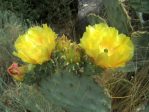
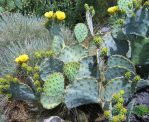
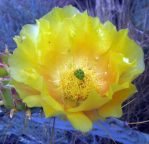

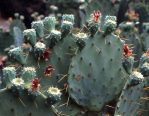

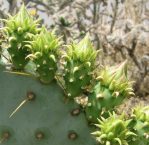

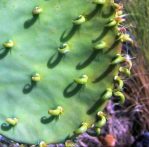
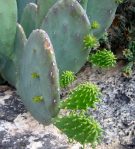
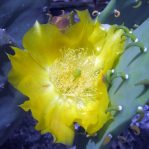
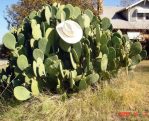
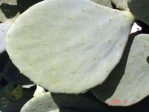
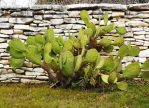
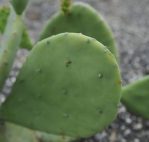
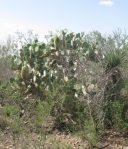


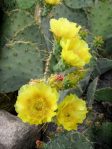
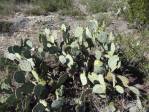
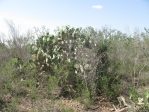

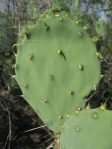


Would you happen to know where I might be able to find Opuntia cacanapa seeds in bulk. I am looking to plant around 13 acres of it.
Cheers
I’m sorry. I don’t know where to purchase O. cacanapa seeds.
Is the original species Opuntia cacanapa rare I see Opuntia cacanapa Ellisiana but not the spined variety